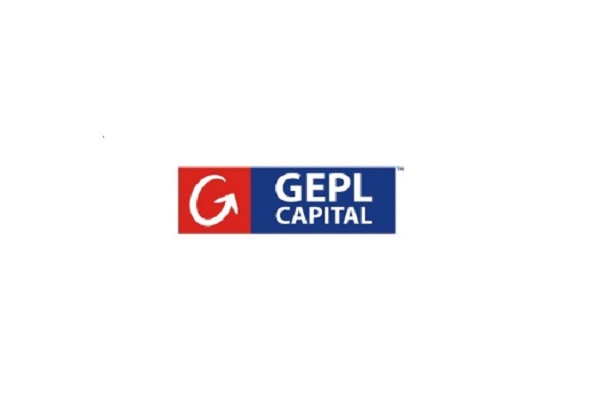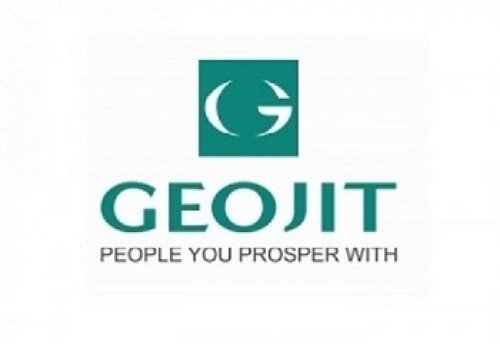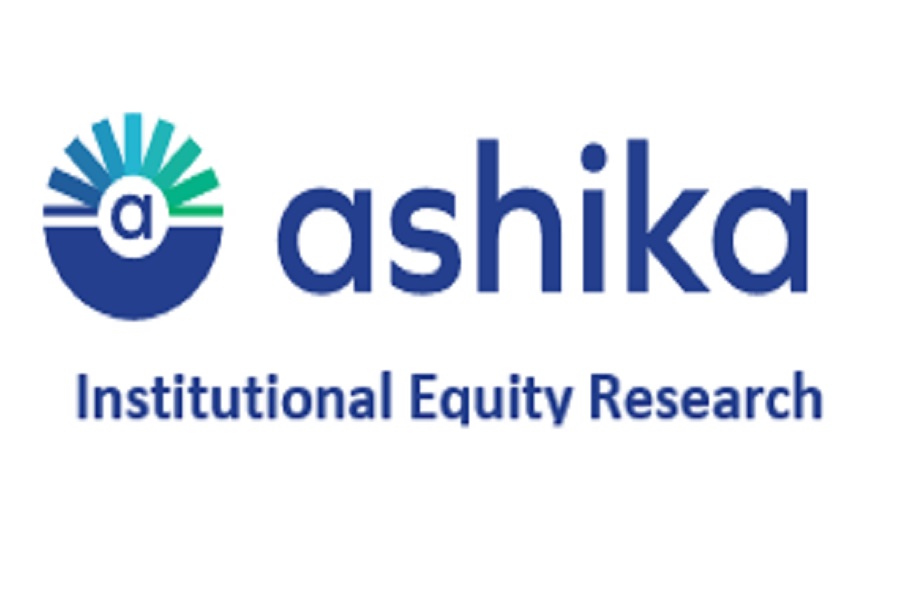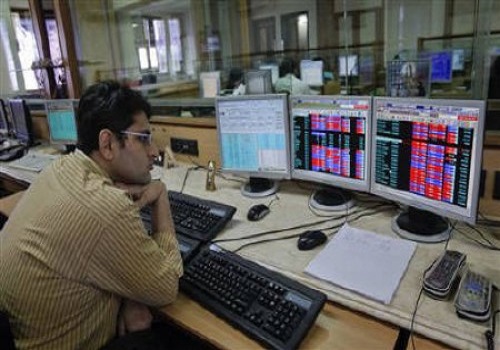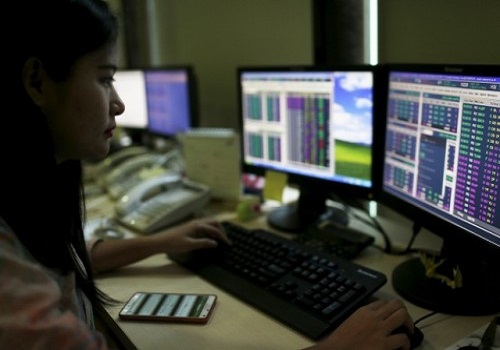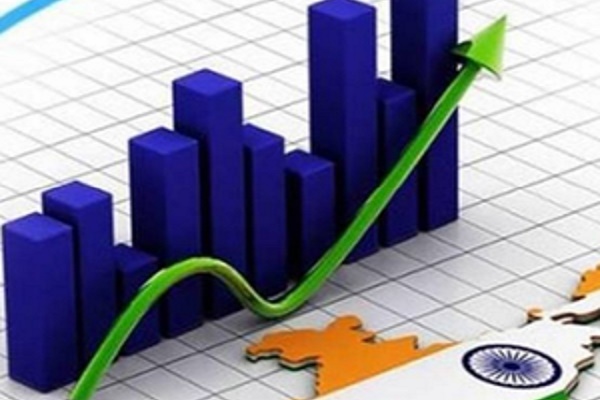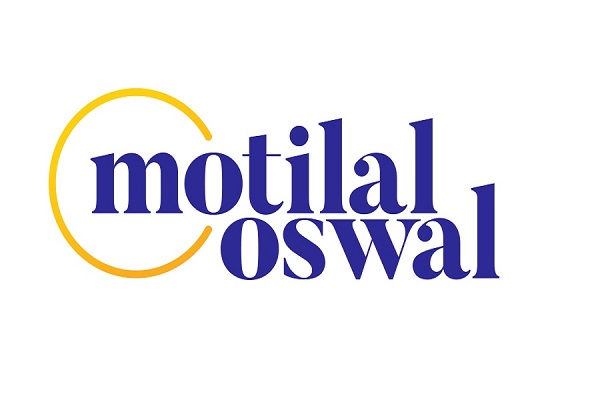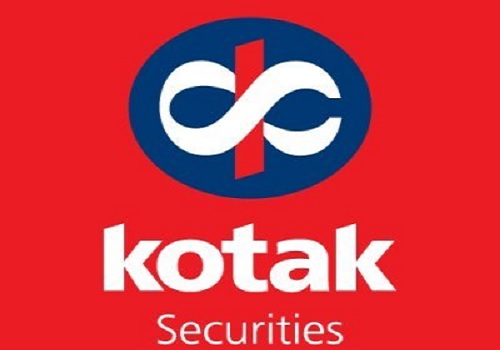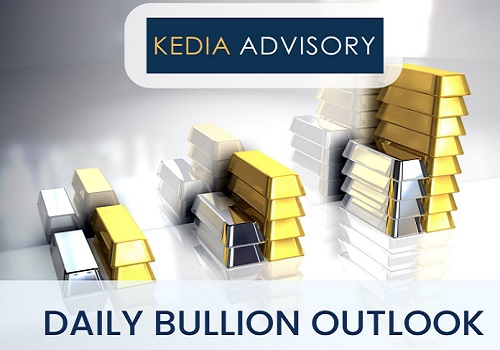Gold trading range for the day is 97515-100395 - Kedia Advisory

Gold
Gold prices surged by 1.33% to settle at 99,328, supported by safe-haven demand amid fresh EU sanctions on Russia and renewed tariff uncertainties. The rise was also fueled by expectations around upcoming central bank meetings, with the ECB anticipated to hold rates steady for the first time in nearly a year and the U.S. Federal Reserve meeting on July 29-30 where rate cut hopes linger. Fed Governor Christopher Waller’s recent comments favoring a rate cut to cushion growth and labor market risks continue to underpin bullish sentiment for the metal. On the physical front, Switzerland’s gold exports surged 44% month-on-month in June, with shipments to the UK reaching the highest level since August 2019 at 83.8 metric tons, indicating robust vault demand. The London Bullion Market Association reported London vault holdings rose by 177.8 tons in June, the highest since August 2023. In contrast, gold demand in India remained weak due to near-record domestic prices, pushing dealers to widen discounts to $10 per ounce to lure buyers. India’s gold imports dropped sharply by 40% year-on-year in June to just 21 tons, their lowest in over two years.Technically, the market reflects fresh buying momentum with open interest rising by 5.66% to 11,300 contracts while prices advanced 1,304. Immediate support for gold is now at 98,420, with a break lower opening the path to 97,515. On the upside, resistance is seen at 99,860 and a move beyond could push prices toward the 100,395 mark.
Trading Ideas:
* Gold trading range for the day is 97515-100395.
* Gold edged higher as new EU sanctions on Russia and US tariff worries supported safe-haven demand.
* US Commerce Secretary Lutnick reiterated August 1 as the firm deadline for enforcing new tariffs globally.
* US Federal Reserve’s July 29–30 policy meeting remains in focus amid Waller’s call for a rate cut.
Silver
Silver prices climbed by 1.86% to settle at 115,046, driven by a weaker US dollar and easing Treasury yields as markets increasingly bet on a Federal Reserve rate cut this month. Fed Governor Christopher Waller’s dovish comments reinforced expectations for monetary easing, citing softening labor data and receding inflation pressures. He downplayed the inflationary impact of tariffs, describing it as transitory, which added to market optimism that the Fed has room to support the economy without stoking fresh price pressures. Additional bullish sentiment came from China, where the industry ministry pledged targeted support to modernize and stabilize key industrial sectors like machinery, autos, and nonferrous metals — a move likely to boost demand for silver and other industrial metals. Investor appetite also remained strong, with global silver ETPs recording net inflows of 95 million ounces in the first half of 2025, surpassing the total for all of last year. Holdings now stand at 1.13 billion ounces, only 7% below their all-time peak in February 2021, signaling robust investor conviction. On the supply side, the silver market is set to post a deficit for the fifth straight year in 2025, underpinned by record-high industrial fabrication, especially in green economy applications. Technically, silver is under fresh buying momentum with open interest up by 9.67% at 20,063 while prices rose 2,096. Support for silver now lies at 113,535, with a break below opening the door to 112,030. Resistance is seen at 115,830, and a move higher could test 116,620.
Trading Ideas:
* Silver trading range for the day is 112030-116620.
* Silver prices gained as the US dollar and Treasury yields retreated on rising Fed rate-cut bets.
* Fed Governor Waller backed a July rate cut, citing a weaker labor market and easing inflation risks.
* The global silver deficit is expected to narrow by 21% to 117.6 million troy ounces in 2025.
Crude oil
Crude oil prices edged lower by 0.18% to settle at 5,697 as the market balanced persistent geopolitical risks with ongoing trade uncertainty. Investor focus remained on the progress of US-EU trade talks ahead of the looming August 1 deadline for potential US tariffs on EU imports, which could dampen demand sentiment if enforced. The European Union meanwhile intensified pressure on Russia with its 18th sanctions package, which includes a lower price cap on Russian crude oil, restrictions on refined fuel products, and a ban targeting a major Indian refinery that uses Russian oil. Elsewhere, supply-side dynamics revealed mixed signals. While rising output from Middle East producers continued to weigh on prices, the US drilling outlook showed some restraint as oil rigs dropped to 422, the lowest since September 2021, according to Baker Hughes. The latest EIA report showed US crude inventories declined by 3.859 million barrels last week, but this was offset by builds in refined products, with gasoline stocks up by 3.399 million barrels and distillate fuels rising by 4.173 million barrels. The US Energy Information Administration trimmed its 2025 production forecast slightly to 13.37 million bpd from 13.42 million bpd previously, reflecting lower prices and cautious producer activity amid trade uncertainties and OPEC+ production policies. Technically, crude oil remains under fresh selling pressure as open interest climbed by 9.76% to 10,417 while prices dipped by 10. Support is now seen at 5,644, and a break below could push prices to test 5,590. On the upside, resistance is expected at 5,749, with further gains possible towards 5,800.
Trading Ideas:
* Crudeoil trading range for the day is 5590-5800.
* Crude oil dropped as markets weighed geopolitical tensions, US-EU trade talks, and looming US tariffs.
*Middle East producers raised output; US rig count fell to 422, the lowest since September 2021.
*IEA raised its 2025 global oil supply growth forecast to 2.1 million bpd, demand outlook slightly trimmed.
Natural gas
Natural gas prices dropped sharply by 6.13% to close at 284.9 as robust supply conditions and a softer demand outlook weighed heavily on the market. Production continues to reach new heights, with output averaging 107.0 billion cubic feet per day (bcf/day) so far in July — surpassing June’s record of 106.4 bcf/day. This strong production pace enabled energy firms to inject a hefty 46 bcf into storage for the week ending July 11, significantly above the 18 bcf added during the same period last year and the five-year average of 41 bcf. Consequently, total gas inventories now stand at 3.052 trillion cubic feet (tcf), which is 6.2% above the five-year seasonal norm, adding to bearish sentiment. On the export side, LNG flows are gradually improving as facilities return from maintenance and unplanned outages. LNG shipments have averaged 15.8 bcf/day in July so far, up from 14.3 bcf/day in June, providing some support to overall demand. Looking ahead, the U.S. Energy Information Administration (EIA) forecasts both output and demand to climb to fresh records in 2025. Dry gas production is projected to increase from 103.2 bcfd in 2024 to 105.9 bcfd in 2025 and 106.4 bcfd in 2026. Technically, the market is witnessing fresh selling pressure with open interest gaining 2.28% to settle at 16,318 while prices fell by 18.6. Natural gas is finding immediate support at 279.6, and a break below could push prices towards 274.2. Resistance is now likely at 294.7, with any move above this level potentially testing 304.4.
Trading Ideas:
* Naturalgas trading range for the day is 274.2-304.4.
* Natural gas fell as robust supply and a softer demand outlook continued to weigh on prices.
* US production hit a record, averaging 107 bcf/day in July, surpassing June’s previous high mark.
* Weekly storage injection totaled 46 bcf, well above last year’s 18 bcf and five-year average.
Copper
Copper prices ended higher by 0.49% at 896.2 as the market found fresh support from positive policy cues out of China and ongoing trade developments. The latest boost came after China’s industry ministry pledged to stabilize growth in critical sectors like machinery, autos, and electrical equipment, which is expected to lift demand for industrial metals, including copper. Earlier this month, copper prices had surged to record levels following the announcement by U.S. President Donald Trump of a 50% tariff on copper imports effective August 1. The measure aims to protect domestic producers and cut reliance on refined copper imports, driving traders to ship inventories to the U.S. ahead of the deadline. On the supply side, China’s refined copper production in June jumped 14% year-on-year to an all-time high, while Chile’s Codelco and Antofagasta reported 9% and 11% production growth, respectively, in the first half of 2025. However, the global refined copper market slipped into a 50,000 metric tons deficit in April, reversing March’s surplus, signaling tightening fundamentals. China’s copper imports also rebounded by 8.7% in June, although year-to-date figures remain under last year’s levels as traders continue to shift inventories to the U.S. ahead of the tariff hike. Technically, the market is under short covering as open interest fell by 12.04% to 4,019 while prices gained 4.35. Copper has immediate support at 893.1 and could test 889.8 if selling intensifies. On the upside, resistance is seen at 899.3, with further gains likely towards 902.2 if momentum persists.
Trading Ideas:
*Copper trading range for the day is 889.8-902.2.
* Copper climbed after China’s industry ministry pledged to stabilize growth in key sectors.
* Peru's copper production decreased 4.6% year-on-year to 220,849 metric tons in May.
* China's refined copper production in June rose 14% year-on-year to a record high.
Zinc
Zinc prices edged higher by 0.77% to settle at 267.3 as renewed concerns about tightness in LME inventories and supportive policy signals from China lifted sentiment. Data showed that over half of the zinc stocks held in LME-approved warehouses have been earmarked for removal, with cancelled warrants totaling around 59,900 tons. Overall LME zinc stocks stand at 118,225 tons, highlighting a tightening supply outlook that underpinned prices. Broader industrial metals sentiment was supported by China’s latest commitment to stabilise growth in key sectors such as machinery, autos, and electrical equipment — sectors crucial for zinc demand due to its role in galvanizing steel. Zinc fundamentals also remain tight domestically in China, where smelters are being pressured to cut production as capacity growth outpaces sluggish demand. Additionally, heavy rains have disrupted operations at some smelters in South China, limiting refined output. Supporting this, global mined supply has faced headwinds. Output from Teck Resources' Red Dog Mine in Alaska, the largest zinc mine globally, dropped by 20% year-on-year to 145,300 tonnes in Q1 2025 as the mine nears depletion. Furthermore, Australian smelter Nyrstar has announced a 25% output cut this year, citing a shortage of ores and uncompetitive treatment charges. Technically, zinc futures are witnessing short covering with open interest dropping by 8.02% to settle at 2,695 while prices gained 2.05. Immediate support is pegged at 265.6, below which prices could test 264. On the upside, resistance is likely at 269.3, with a breakout above paving the way for a test of 271.4.
Trading Ideas:
* Zinc trading range for the day is 264-271.4.
* Zinc rose as worries about tightness on the London Metal Exchange surfaced.
* Data showed more than half of stocks in its approved warehouses had been marked to leave the system.
* Prices were supported by China's plans to stabilise growth in the machinery, autos and electrical equipment sectors.
Aluminium
Aluminium prices edged up by 0.42% to settle at 253.45 as optimism from China’s policy support helped offset near-term demand softness. Prices found support after China’s industry ministry announced plans to stabilise growth in critical sectors like machinery, autos, and electrical equipment — key consumers of aluminium. This move is seen as a positive step to underpin industrial metal demand as the world’s top aluminium producer and consumer tries to balance economic headwinds with structural demand. On the supply side, global primary aluminium output rose by 0.9% year-on-year to 6.045 million tonnes in June, according to International Aluminium Institute data. However, China’s domestic production pace is expected to slow this year as the annual cap of 45 million tonnes, aligned with carbon emission targets, acts as a supply ceiling. Meanwhile, global supply dynamics are seeing mixed signals. Shanghai Futures Exchange aluminium inventories rose 5.5% on the week, while LME stocks climbed by 15,000 tonnes to reach 415,000 tonnes, reflecting some demand softness. In export markets, Chinese aluminium exports fell to 489,000 tonnes in June from May’s 547,000 tonnes, partly reflecting shifting trade patterns and moderating external demand. Technically, the aluminium market shows signs of short covering, with open interest dropping by 12.56% to 2,046 contracts while prices gained 1.05. Immediate support is pegged at 251.9, with further downside testing possible at 250.2. Resistance is seen at 254.6, and a breakout above may push prices toward 255.6.
Trading Ideas:
* Aluminium trading range for the day is 250.2-255.6.
* Aluminium gains after China's industry ministry vowed to stabilise the machinery, autos and electrical equipment sectors.
* China's imports of unwrought aluminium and products jumped 24.1% year-on-year in June.
* Global aluminium output rises 0.9% year on year in June – IAI
Turmeric
Turmeric futures extended their downward trajectory yesterday, settling 1.05% lower at 13,212 per quintal amid expectations of higher acreage driven by favourable monsoon rains this sowing season. The slight increase in daily arrivals to 13,660 quintals from 11,940 quintals also pointed to steady market supply, adding to the pressure on prices. Despite the larger planted area—estimated at 3.30 lakh hectares for 2024–25, a 10% increase over last year’s 3 lakh hectares—production may not rise proportionally due to weather risks. Untimely rains could hurt yields by 10–15% compared to last year’s output of 10.75 lakh tonnes, especially in regions like Nanded where smaller rhizomes and crop rots are reported. On the demand side, however, there is still optimism as the Duggirala market continues to see strong buyer interest for fresh, high-quality stock that commands a premium over older inventory. Daily trading remains robust at around 1,000–1,200 bags per day, defying typical end-of-season slowdowns. Meanwhile, the export front remains a bright spot, with turmeric exports rising by 8.37% to 34,162.28 tonnes during April–May 2025 compared to the same period last year. May alone saw a healthy month-on-month surge of 28.41% over April exports, reflecting strong overseas demand. Technically, the market is under fresh selling pressure, as open interest rose marginally by 0.03% to 17,715 while prices dropped 140. Immediate support is seen at 13,144, with further downside possible to 13,076. On the upside, resistance is at 13,320, and a move above this could lift prices towards 13,428 in the near term.
Trading Ideas:
* Turmeric trading range for the day is 13076-13428.
* Turmeric prices dropped due to expected increase in acreage.
* Turmeric acreage is expected to increase by 15-20% this season, supported by low competitive crop prices.
* In April 2025 around 14,956.80 tonnes were exported as against 14,109.10 tonnes in April 2024 showing a rise of 6%.
* In Nizamabad, a major spot market, the price ended at 14039.7 Rupees dropped by -0.45 percent.
Jeera
Jeera futures continued to slide, settling 1.25% lower at 19,320 as weak domestic and export demand weighed on sentiment following the conclusion of the retail buying season. Traders noted that with the retail season over and foreign buyers largely inactive, demand has remained subdued while comfortable domestic supplies and ample existing stock have further pressured prices. Current estimates suggest that farmers still hold about 20 lakh bags of cumin, with only 3–4 lakh bags likely to be traded by the end of the season, leaving a hefty carry-forward stock of nearly 16 lakh bags. While better crop conditions and favourable sowing have kept this season’s production estimates broadly in line with last year, at around 90–92 lakh bags compared to 1.10 crore bags previously, the global supply situation remains tighter due to adverse weather in key producing countries like Syria, Turkey, China, and Afghanistan. On the export front, shipments in April–May 2025 fell sharply by 27.07% year-on-year to 42,925.74 tonnes. However, monthly data showed a brighter spot, with May exports rising 11.26% over May 2024 and jumping 17.68% from April 2025, offering some relief. In the spot market, Unjha prices also dipped by 0.22% to 20,005.75, reflecting the overall sluggish sentiment. Technically, the market is under long liquidation with open interest down by 1.16% to 6,135 contracts while prices slipped 245. Jeera now finds immediate support at 19,060, and a break below could push it to 18,790. Resistance is seen at 19,650, and a move above this level could lift prices towards 19,970 in the near term.
Trading Ideas:
* Jeera trading range for the day is 18790-19970.
* Jeera prices dropped due to weak domestic post retail season.
* Only 3-4 lakh bags are expected to be traded by the end of the season, leaving a carry-forward stock of about 16 lakh bags
* Total arrivals witnessed a marginal increase to 12,000 bags (55 kg each) as against 11,800 bags on the previous day.
* In Unjha, a major spot market, the price ended at 20005.75 Rupees dropped by -0.22 percent.
Views express by all participants are for information & academic purpose only. Kindly read disclaimer before referring below views


